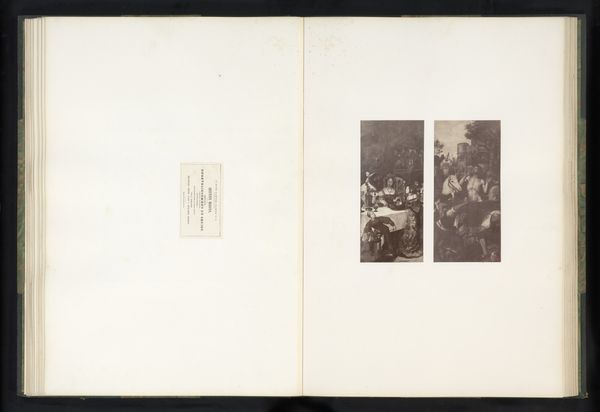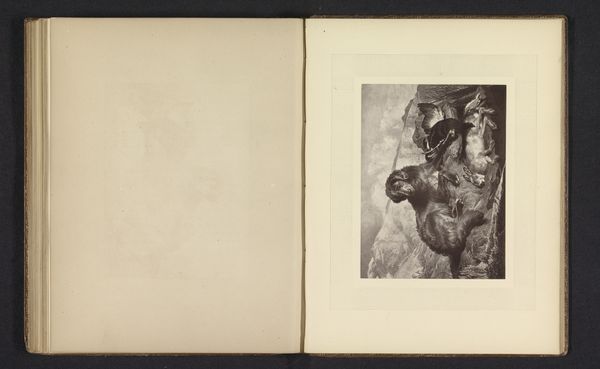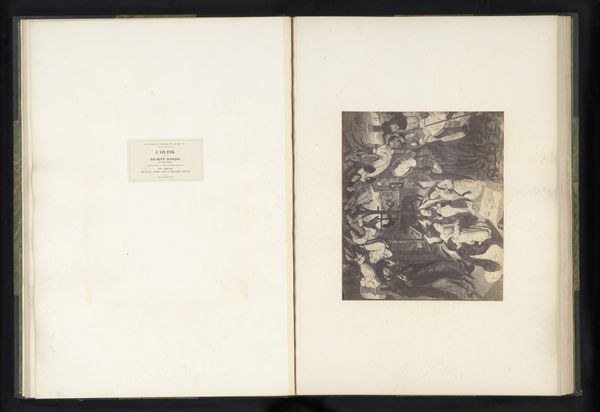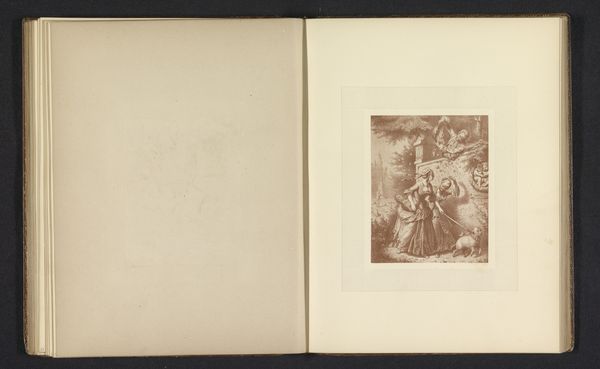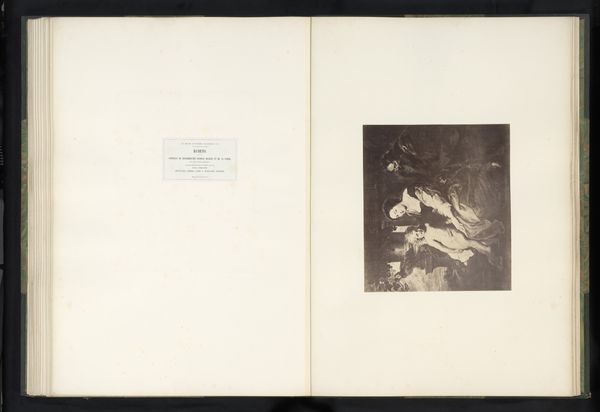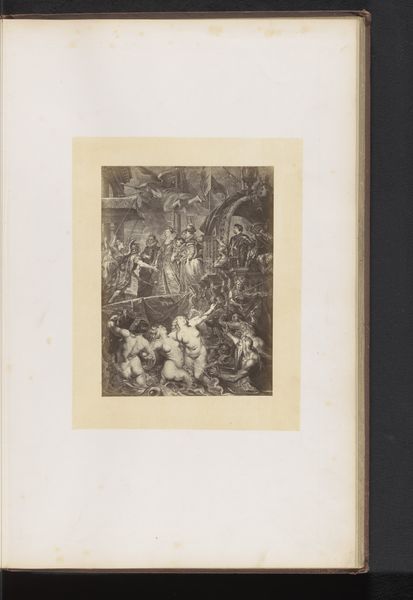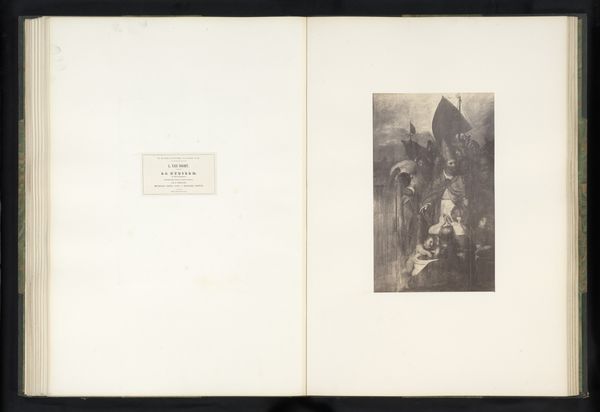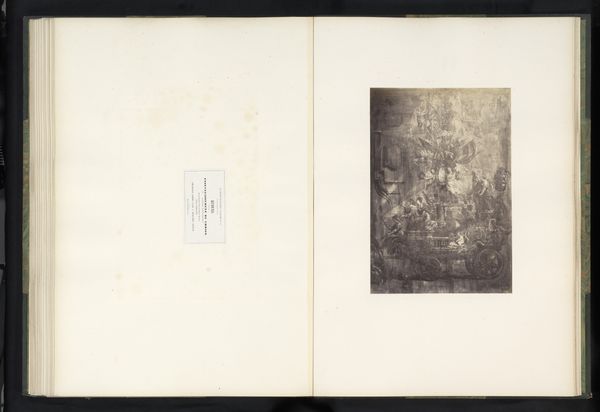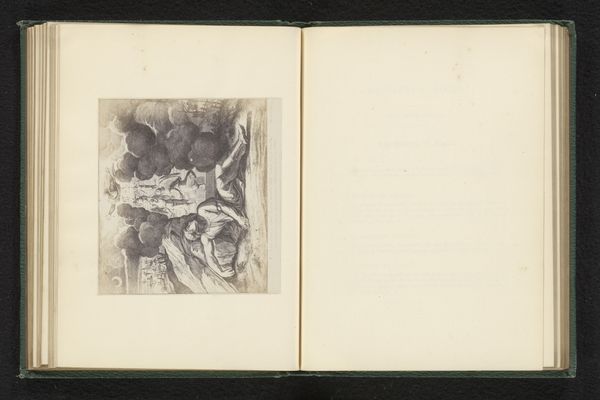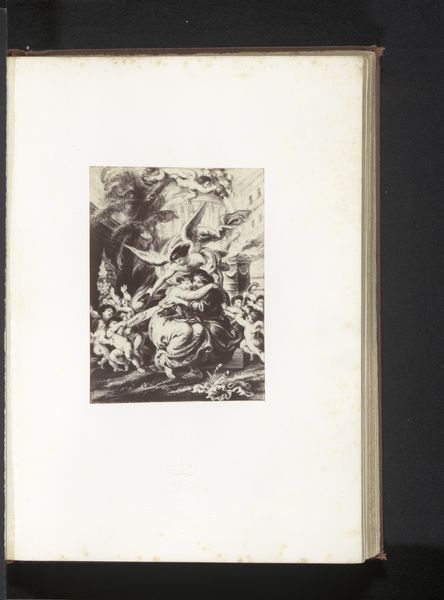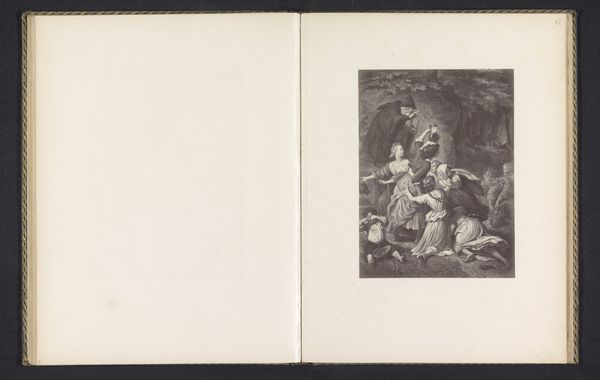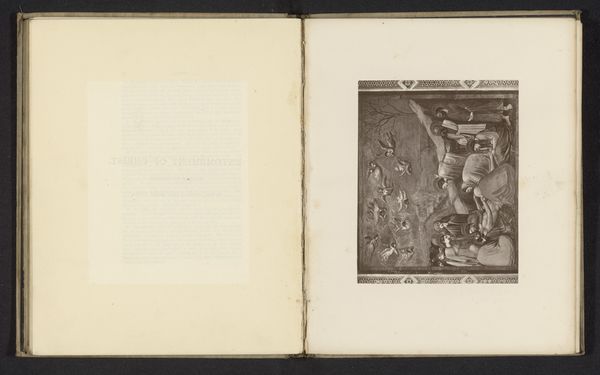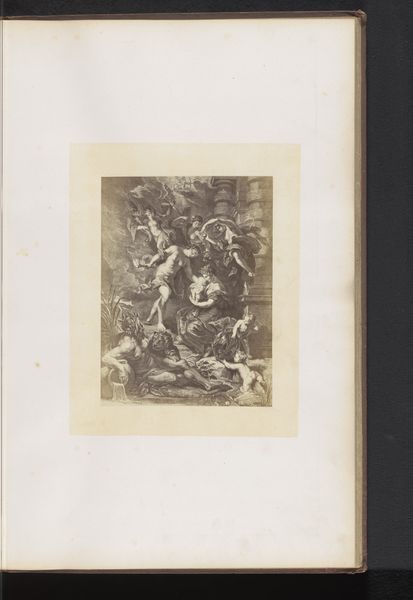
Fotoreproductie van de Kruisiging met lanssteek door Peter Paul Rubens before 1861
0:00
0:00
Dimensions: height 383 mm, width 281 mm
Copyright: Rijks Museum: Open Domain
Curator: This gelatin-silver print before us reproduces Peter Paul Rubens' powerful painting, "The Crucifixion with the Lance." What’s striking to you at first glance? Editor: Oh, the drama! Even in this smaller photographic form, you can feel the Baroque intensity. The swirling figures, the dynamic diagonals—it's designed to grab you by the gut, right? It definitely evokes a very palpable sense of suffering and injustice. Curator: Absolutely. And think about the context. Photography emerging, trying to capture, to reproduce, the grandeur of the old masters. Here, Fierlants uses photography, typically associated with realism, to replicate the drama and emotionalism of Baroque history painting. How might this reproduction democratize art for wider audiences, and conversely, what gets lost in translation? Editor: I think there’s something lost, right? The visceral experience of standing before a massive Rubens canvas—the sheer scale, the texture of the paint—that's diluted here. But what we gain, perhaps, is accessibility. It brings this moment—this graphic depiction of state sanctioned execution – to a wider public. That said, whose story is it centering? Where are the perspectives of other marginalized people who suffered execution throughout history? How does art serve and potentially subvert the state in such reproductions? Curator: That's a really interesting point—framing Rubens through a contemporary lens, considering whose perspectives might be absent in the grand narratives being reproduced. For me, I’m always drawn to how the light catches on the figures in this reproduction, even with the reduced scale. It still feels theatrical, each figure caught in a moment of high emotion. Is that something that carries through despite the photographic translation? Editor: Yes, though I think some of the nuances get lost. The starkness of the black and white underscores the violence but can flatten some of the intended emotion. But overall, I still sense that visceral tug. The original forces us to witness the spectacle of suffering. This print encourages introspection from afar about the use of religion as a justification for violence, albeit on a different scale. Curator: So, both a win and a loss, this artistic "copy," it offers access while muting certain details. But, that new form might actually shift our very understanding and challenge power and history in novel ways, and invite new stories into the space? Editor: Exactly. It forces us to engage not only with Rubens but with the social implications of replicating such an image, and to critically examine who controls these historical narratives.
Comments
No comments
Be the first to comment and join the conversation on the ultimate creative platform.
